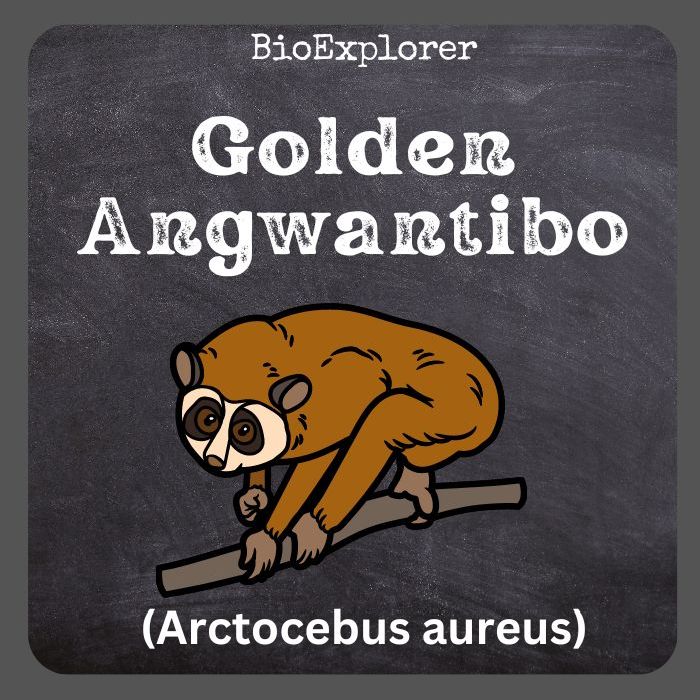
| Animalia | Primates | Lorisidae | Arctocebus | Arctocebus aureus |

- Common Name: Golden Angwantibo
- Taxonomy Classification Year: 1902
- Monkey Size: 22 to 30 cm (8.7 to 11.9 in)
- Skin Color(s): Rose Gold
- Habitat: Forest, Rainforest
- Diet: Carnivorous (insectivorous)
- Native Countries: Cameroon, Democratic Republic of Congo, Equatorial Guinea, Gabon
Golden Angwantibo Distribution
Golden Angwantibo Characteristics
The golden angwantibo[1] is a strepsirrhine primate of the Lorisidae family.
- It shares the Arctocebus genus with the Calabar angwantibo; they are commonly known as the golden pottos.
- Has this curious-looking little prosimian swallowed a bowling ball? No. But its burly physique suggests it likes the buffet table.
- Or perhaps the Golden angwantibo’s stooped posture contributes to this effect. The thick, shaggy fur covering this primate’s shoulders, back, and lanky limbs are reddish-gold.
- The frosted tips make one wonder if the Golden angwantibo has visited a rainforest barbershop.
- They are lighter “guard hairs” that protect the coat from moisture and abrasion. Cream-colored pelage drapes the underside of the prosimian.
- Large brown eyes and a long-pointed nose dominate the face. Darker fur encircles the eyes, and a band of white fur runs across the nose. Small, bare, scalloped ears protrude from each side of the head.
Golden Angwantibo Facts
- Bärenmaki, meaning “lemur bear“, is the German name for the golden angwantibo due to its bear-like appearance. However, we see no resemblance.
- Excellent night vision thanks to an adaptation called the tapetum lucidum, a thin, light-reflecting membrane behind the eye’s retina, colloquially known as the “eye glare, ” allows these prosimians to navigate in the dark easily.
- The dense scrub and undergrowth of the forest offer them security, especially during the day when they curl up to sleep, hidden from predators in the tangle of vines.
- With long, narrow, downward-pointing snouts guided by a keen sense of smell, these prosimians are silent and stealthy when hunting insects. Still, they react with incredible speed and agility when reaching out to unsuspecting creatures.
- Before devouring the poisonous caterpillars, the Angwantibos use a strange technique. They “massage” the spine of the crawling insect, thereby removing poisonous hair follicles.
Suggested Reading: All Prosimians
Cite This Page
APA7MLA8Chicago
BioExplorer.net. (2025, December 26). Golden Angwantibo. Bio Explorer. https://www.bioexplorer.net/animals/mammals/prosimians/golden-angwantibo/.
BioExplorer.net. "Golden Angwantibo" Bio Explorer, 26 December 2025, https://www.bioexplorer.net/animals/mammals/prosimians/golden-angwantibo/.
BioExplorer.net. "Golden Angwantibo" Bio Explorer, December 26 2025. https://www.bioexplorer.net/animals/mammals/prosimians/golden-angwantibo/.











